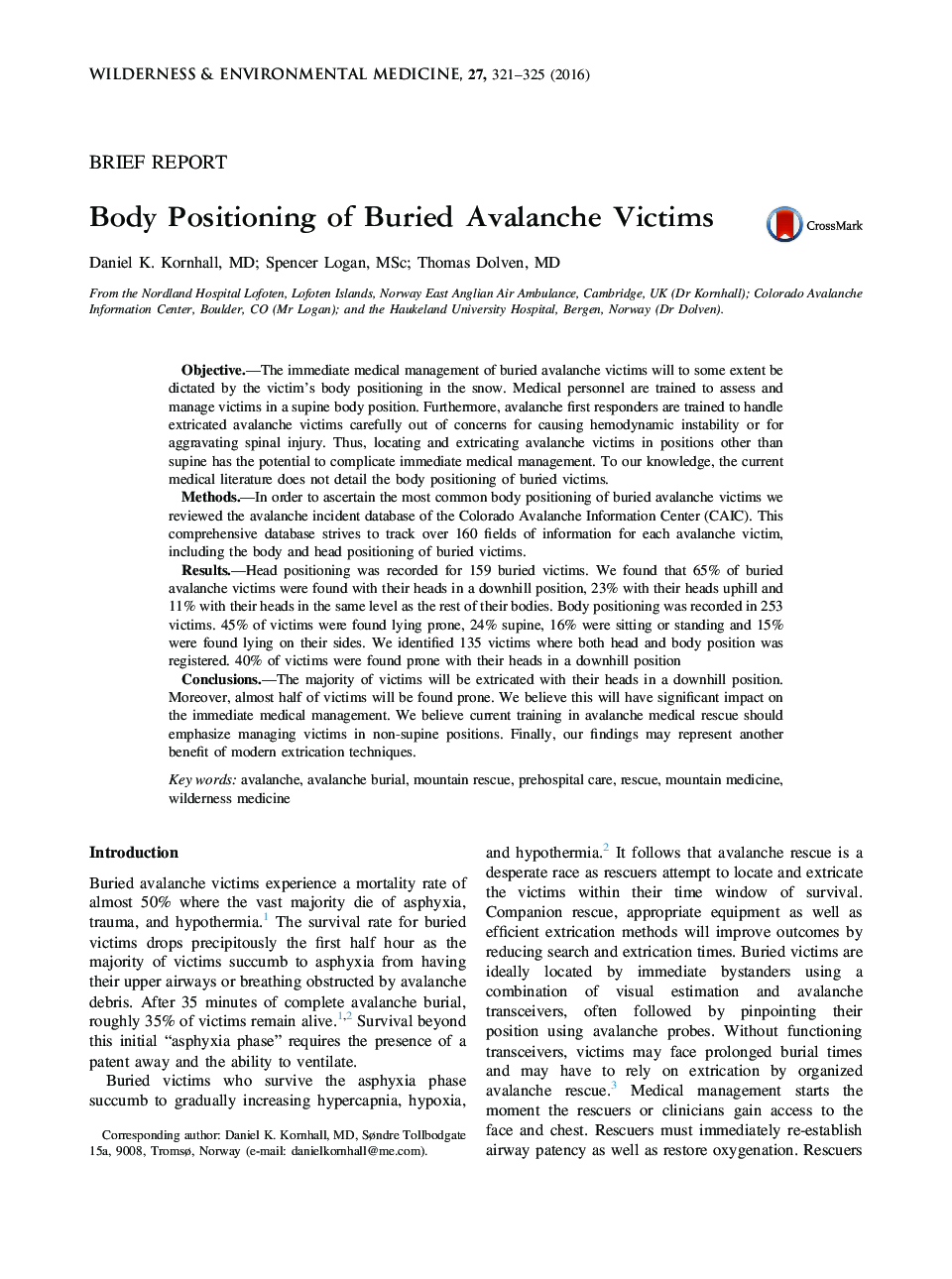| کد مقاله | کد نشریه | سال انتشار | مقاله انگلیسی | نسخه تمام متن |
|---|---|---|---|---|
| 2615346 | 1135084 | 2016 | 5 صفحه PDF | دانلود رایگان |
ObjectiveThe immediate medical management of buried avalanche victims will to some extent be dictated by the victim’s body positioning in the snow. Medical personnel are trained to assess and manage victims in a supine body position. Furthermore, avalanche first responders are trained to handle extricated avalanche victims carefully out of concerns for causing hemodynamic instability or for aggravating spinal injury. Thus, locating and extricating avalanche victims in positions other than supine has the potential to complicate immediate medical management. To our knowledge, the current medical literature does not detail the body positioning of buried victims.MethodsIn order to ascertain the most common body positioning of buried avalanche victims we reviewed the avalanche incident database of the Colorado Avalanche Information Center (CAIC). This comprehensive database strives to track over 160 fields of information for each avalanche victim, including the body and head positioning of buried victims.ResultsHead positioning was recorded for 159 buried victims. We found that 65% of buried avalanche victims were found with their heads in a downhill position, 23% with their heads uphill and 11% with their heads in the same level as the rest of their bodies. Body positioning was recorded in 253 victims. 45% of victims were found lying prone, 24% supine, 16% were sitting or standing and 15% were found lying on their sides. We identified 135 victims where both head and body position was registered. 40% of victims were found prone with their heads in a downhill positionConclusionsThe majority of victims will be extricated with their heads in a downhill position. Moreover, almost half of victims will be found prone. We believe this will have significant impact on the immediate medical management. We believe current training in avalanche medical rescue should emphasize managing victims in non-supine positions. Finally, our findings may represent another benefit of modern extrication techniques.
Journal: Wilderness & Environmental Medicine - Volume 27, Issue 2, June 2016, Pages 321–325
